
Contains cover sheet and teacher example/artifact.
- Subject:
- Composition and Rhetoric
- Elementary Education
- Language, Grammar and Vocabulary
- Speaking and Listening
- Material Type:
- Lesson Plan
- Author:
- Johanna Richards
- Date Added:
- 05/22/2019

Contains cover sheet and teacher example/artifact.

Cover Sheet
Teacher Example
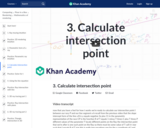
Now we are ready to calculate an intersection point using our ray CP (parametric form) and our line AB (slope-intercept form).
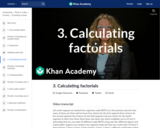
Now that we have a feeling for constructing permutations let's introduce the factorial formula to make counting them easy.
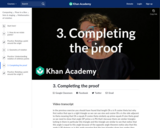
In this video we'll uncover the connection between the previous diagram and the rotation formulas. Repeat viewing suggested!
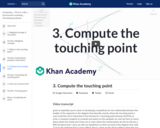
Let's apply what we just learned to calculate the touching point.

Task using place value.
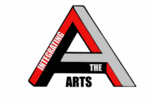
This resource was created by Heidi Meyers, in collaboration with Dawn DeTurk, Hannah Blomstedt, and Julie Albrecht, as part of ESU2's Integrating the Arts project. This project is a four year initiative focused on integrating arts into the core curriculum through teacher education, practice, and coaching.

A simple step-by-step guide to working with the maya graphe editor by creating a bouncing ball.
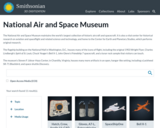
3D Scans of Museum artifacts
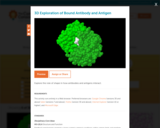
Explore the role of shape in how antibodies and antigens interact.

This comprehensive Open Source lesson plan is designed for Kindergarten through Middle School level students to learn about life cycles, plants needs, and plant structures & their functions through hands-on investigations with Wisconsin Fast Plants. Depending on the grade level, students engage at an appropriate depth with developing models and constructing arguments that plants have internal and external structures that function to support survival, growth, behavior, and reproduction. This lesson is available as a Google Doc in the Gather, Reason, Communicate instructional model. You may copy the lesson Doc to your own Drive and edit/adapt for your own use--it is shared by the Fast Plants Program as an Open Education Resource" therefore, you are free to use and adapt for noncommercial purposes, provided you attribute the Wisconsin Fast Plants Programs website (www.fastplants.org) as your source and share openly (for noncommercial purposes) any materials you develop with ours.
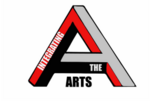
This resource was created by Judy Prewett, in collaboration with Dawn DeTurk, Hannah Blomstedt, and Julie Albrecht, as part of ESU2's Integrating the Arts project. This project is a four year initiative focused on integrating arts into the core curriculum through teacher education, practice, and coaching.
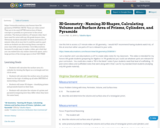
https://www.educreations.com/lesson/view/3d-geometry/29389361/
NOTE: These are video notes! They are to be used AFTER instruction of these concepts or possibly as a precursor to the actual activities.
The link provided is a 27 minute video that I have used for notes with my 6th grade honors class. Obviously students shouldn't sit down and watch a 27 minute video all at once but it could be used in a part series as students are discovering these concepts in your class with actual activities.
I love Educreations because it's really easy to make a video, get a link that you can embed into any online classroom space, and a large portion of the storage space is free! YAY FREE!

Today we’re going to discuss how 3D graphics are created and then rendered for a 2D screen. From polygon count and meshes, to lighting and texturing, there are a lot of considerations in building the 3D objects we see in our movies and video games, but then displaying these 3D objects of a 2D surface adds an additional number of challenges. So we’ll talk about some of the reasons you see occasional glitches in your video games as well as the reason a dedicated graphics processing unit, or GPU, was needed to meet the increasing demand for more and more complex graphics.

Short Description:
An open textbook created to improve both teaching and learning vital concepts and techniques in multivariable calculus, one of the fundamental courses across the undergraduate curriculum in science and engineering. The goals of this resource are to help learners develop their geometric intuition about abstract and complex mathematical concepts (e.g., partial derivatives, multiple integrals, vector fields), and train them to make connections between concepts visually (e.g., connecting “vectors” in mathematics with “magnitude” and “direction” in physics) in order to more fully understand engineering, physics and mathematical problems (e.g., differential equations) in their subsequent STEM coursework.
Word Count: 7075
(Note: This resource's metadata has been created automatically by reformatting and/or combining the information that the author initially provided as part of a bulk import process.)
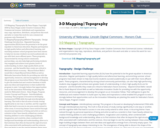
3-D Mapping | Topography
By Dana Hoppe, Copyright 2018 by Dana Hoppe under Creative Commons Non-Commercial License. Individuals and organizations may copy, reproduce, distribute, and perform this work and alter or remix this work for non-commercial purposes only.
Download: 3-D_MappingTopography.pdfDelete
Topography - Design Challenge
Introduction - Expanded learning opportunities (ELOs) have the potential to be the great equalizer in American education. Regular participation in high quality before and afterschool learning, and enriching summer school programs have been shown to help low-income students succeed academically on par with their more affluent peers. These programs, characterized by strong school-community partnerships, can also help high-performing students stay engaged and achieve even greater levels of understanding. In short, high-quality ELOs are for everyone - and the benefits they create are critical to Nebraska's future economy. - Beyond School Bells I would like to thank Beyond School Bells as well as Nebraska Innovation Studio for providing me with the opportunity, resources, and encouragement to develop this program as an Innovation Fellow. Their willingness to give the intellectual and creative freedom to build upon my ideas and inspirations is what enabled this program to exist. I strongly believe that opportunities such as the Innovation Fellowship are planting the seeds for Nebraska's future. -Dana Hoppe, Program Creator
Concept and Purpose - Interdisciplinary Learning: This program is focused on developing fundamental STEM skills through interdisciplinary learning. The truth is that all areas of study overlap significantly in one way or another, and the cognitive skills that lead to success in one area surely extend to other areas. A recurring theme I have noticed through my personal experience of being and artist as well as a scientist is that I have heavily utilized my creative thinking abilities to solve challenging problems. Imagination and creativity, when combined with background knowledge and understanding, allow us to find solutions that often lie beyond the rigid structure often associated with mathematics and the sciences. Once we begin to see the overlap between these areas, we begin building bridges between them and new ideas and applications emerge from a formerly empty space. The concept of topography was always interesting to me. The strangeness of being able to discern the shape of the land simply from the distance between a hypnotizing assortment of lines on a flat piece of paper was immediately intriguing. How does this flat sheet of abstract shapes translate to the three-dimensional complexity of a mountain, a valley, or a bluff? Topography is the platform of this program because it is a very versatile concept and can be used to create art and models representing a diverse range of fields. The activities in this program focus on having the students follow processes often found in Computer Science. Every process they complete can be thought of as an algorithm, and when they repeat steps, it can be thought of as a loop. They are also recursively calling the same function on each resulting piece they create, mimicking the concept of dynamic programing. The permutation matrix activities will familiarize students with moving through the data in a matrix and adding data to stacks. While they are doing all of these activities, however, there will be no jargon they have to learn, and they will probably not even realize until they take their first Computer Science course that it is even related. To the students, they will simply be creating art in a new and interesting way.

This workshop covers the basics of 3D modelling in Processing. From the 3D coordinate system, placing different shapes, surfaces, and camera angles. This introductory workshop is suitable for all students with some basic Processing knowledge. We assume that you are familiar with 2D shapes in Processing, including pushMatrix, rotate and translate. This workshop will only cover basics, sufficient to create a landscape with 3D objects and a moving object.
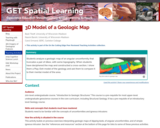
Play-Doh model of a geologic map
Provenance: Carol Ormand Ph.D., Carleton College
Reuse: This item is offered under a Creative Commons Attribution-NonCommercial-ShareAlike license http://creativecommons.org/licenses/by-nc-sa/3.0/ You may reuse this item for non-commercial purposes as long as you provide attribution and offer any derivative works under a similar license.
Students analyze a geologic map of an angular unconformity that truncates a pair of dikes, with some topography. When students have deciphered the map and constructed a cross-section, I show them a Play-Doh model of the geology and ask them to compare it to their mental model of the area.
(Note: this resource was added to OER Commons as part of a batch upload of over 2,200 records. If you notice an issue with the quality of the metadata, please let us know by using the 'report' button and we will flag it for consideration.)
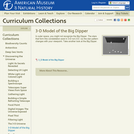
Students see firsthand that stars and constellations are not arranged in a flat, 2-D pattern in this Moveable Museum unit. The five-page PDF guide includes suggested general background readings for educators, activity notes, step-by-step directions, and a Big Dipper map. Students make their own 3-D models of the Big Dipper using readily available materials and examine their models, observing the 3-D constellation from new perspectives.